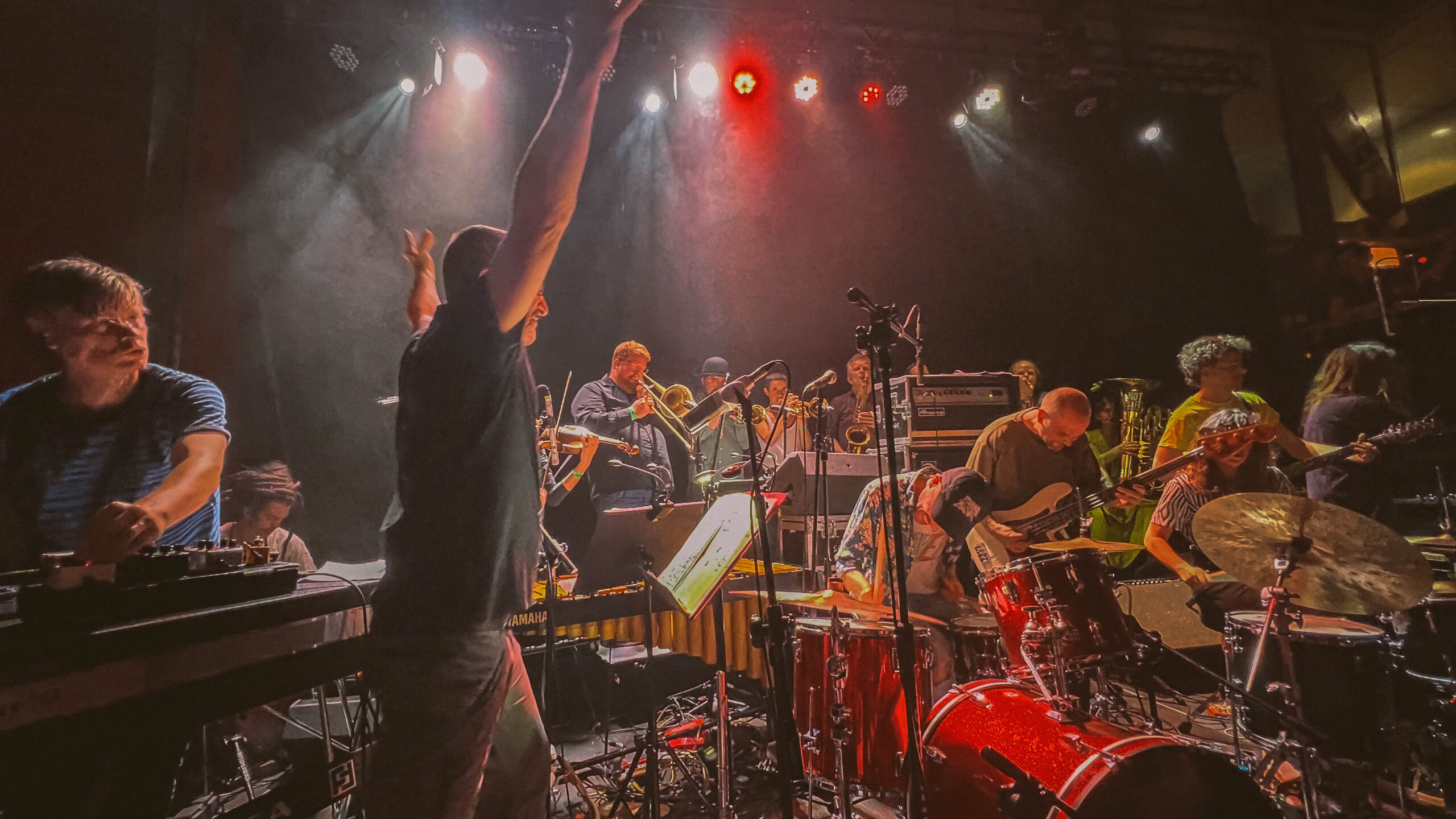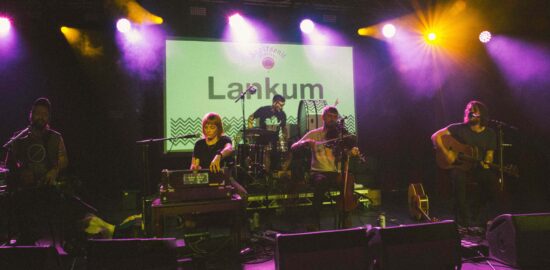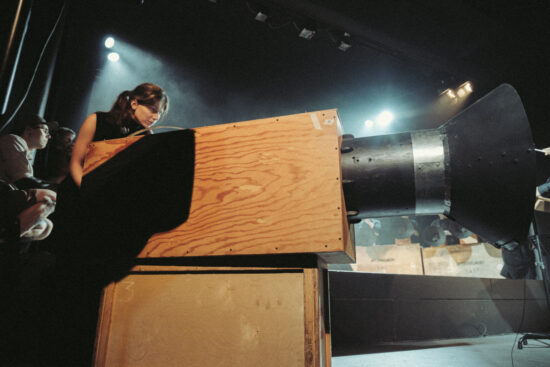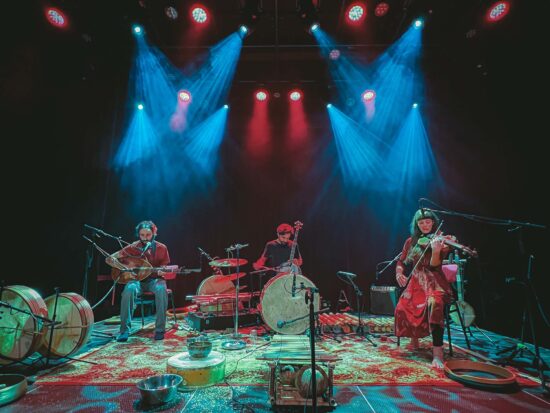Fire! Orchestra shows brilliantly how, relying on groove and often post-punk rhythms, they can make room for improvisation, ensemble playing, and songs. This has an extraordinary power in it.
Special concerts require special surprises. That is why Fire! Orchestra does not start playing on the stage but on the mezzanine. The confused audience is surprised by the brass section (Susana Santos Silva, Heida Karine Johannesdottir, Goran Kajfeš, Mats Äleklint), which acoustically, at times wailing mournfully, at others ripping loud sounds or sonorously straining to carry a wave of music over our heads. In a moment – a second ‘solo’ – Mette Rasmussen hides behind an amplifier on stage. She emerges – the saxophonist plays aggressively, punkishly, sometimes her instrument sounds like a squeaker, sometimes she interrupts her playing by shouting, ‘Hey Man!’. She is followed on stage by the four flutists (Anna Högberg, Fredrik Ljungkvist, Delphine Joussein Mats Gustafsson), straining the harshly broken sound of their instruments, at other times harmoniously harmonizing supported by the effects of Joussein, who loops her instrument and paints ambient background. For a break of wind instruments, Alex Zethson sits behind the piano at the end, thickly playing an almost percussive motifs, tugging hard on the strings, almost as if tapping away on a typewriter.
In a moment, 18 people appear on the enlarged stage – the entire line-up can barely fit between instruments and the backline. Taming such a band, assigning musicians a role, and still playing compactly is not easy, but Gustafsson, who alternates baritone saxophone and conducts the entire line-up, works alertly. They begin with ‘Cala Boca Lenino’, which de facto serves as a base to showcase the skills of the brass section, who at times evocatively wail chorally and at other times play fractured, improvised parts between rhythmic patterns served up primarily by the rhythm section (Johan Berthling, Blanche Laufente, and David Sandstrom). They sound rocking (‘Lost Eyes in dying hand’). While on the album, a large part of the arrangement was assigned to string instruments, they are accompanied by brass – sounding orchestrally powerful, especially in the second part of ‘To gather it all. Once’, where the bass sound is boosted by tuba and trombone. But there are also exceptional moments of solo showdowns – the piece mentioned above opens with a subtly painted guitar wallop by Julien Desprez (who later hits the instrument directly, this one lash out, and the sound thickens). Susana Santos Silva opens the last track with a scathing trumpet solo: she sounds loud, which she interweaves with tapping the instrument, hissing, and hooting.
For the encore song: the whole orchestra plays ‘At Least I am Free’, a cover of Chic recorded on Arrival – a great, melodic piece reminding me here even of Broken Social Scene. Another soloist shines – David Sandström, known from Refused, alternates between sitting behind the drum kit or singing throughout the concert. He both melodically sings and stridently screams into the microphone. Here the brass accumulates, making the whole thing sound much more powerful than on the album; the finale is for an erratic display by the two drummers. Fire! Orchestra shows brilliantly how, relying on groove and often post-punk rhythms, they can make room for improvisation, ensemble playing, and songs. This has an extraordinary power in it.




